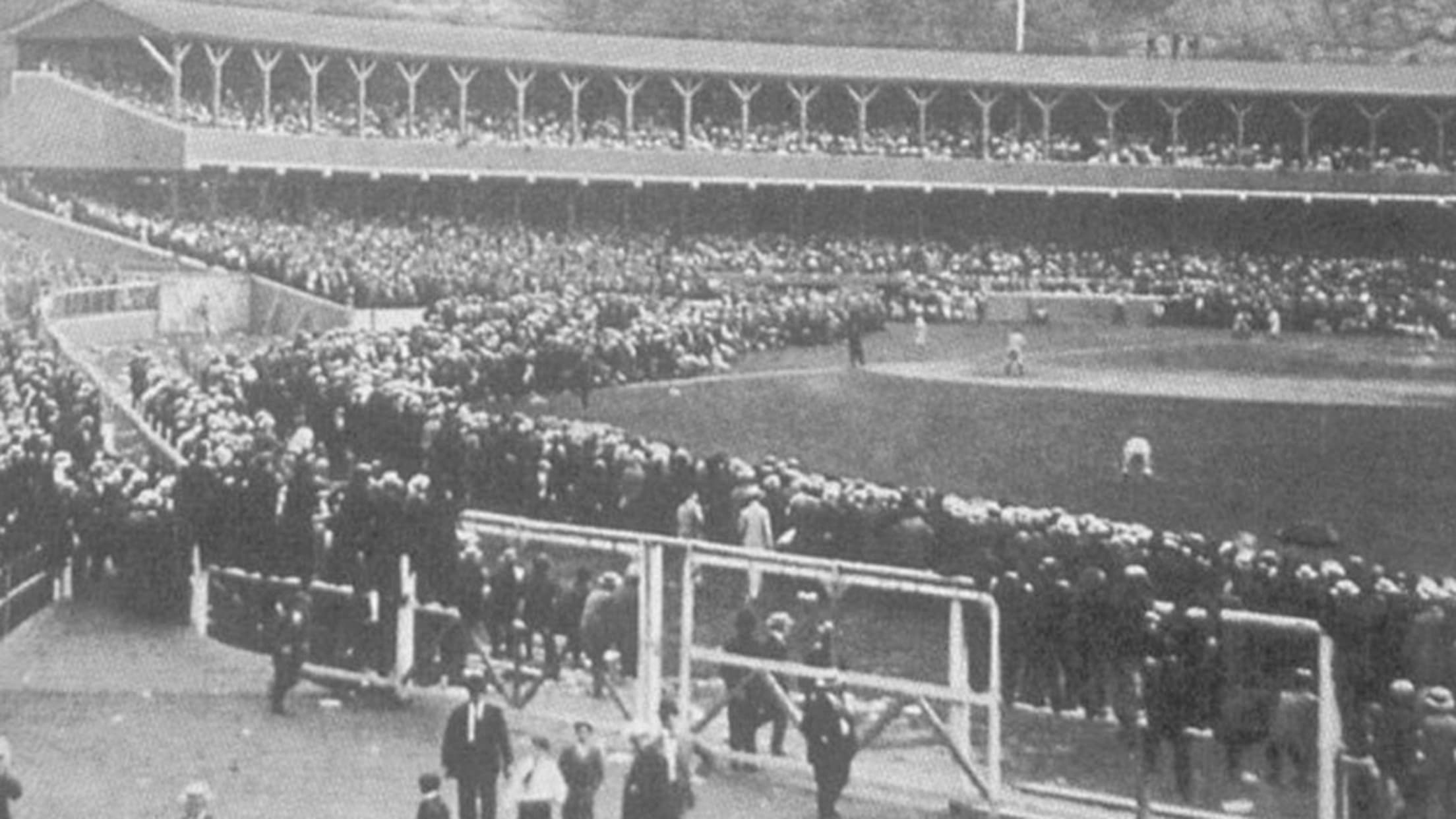April 22, 1891: Once the upstart Players League folds, the Giants take over their ballpark, which had been built right next to the second Polo Grounds. Until the full enclosure of the stadium in 1923, fans could stand in the outfield to watch games.
Franchise Timeline
1883
John B. Day and Jim Mutrie, owners of the American Association's New York Metropolitans, form a National League team called the New York Gothams.
1885
Jim Mutrie becomes the manager of the Gothams, and he and John Day move some of the star players from the pennant-winning Metropolitans over to the National League franchise. The Gothams become known as the Giants during the season.
On May 1, they play their first game at a field once used for polo matches at 110th Street and Sixth Avenue. With six future Hall of Famers on the roster, the Gothams recorded the highest winning percentage in franchise history (.759, 85-27). Pitchers Tim Keefe and "Smiling Mickey" Welch combined for an astounding 76 victories, while slugging third baseman Roger Connor (who would hold the career home runs record until Babe Ruth came along) batted .371 as one of four players to hit over .300 for the team that season.
On June 3, after a rousing extra-innings victory over Philadelphia, manager Jim Mutrie was so overcome with emotion that he supposedly blurted out a description of his team that immediately became the franchise's new nickname. He called them his Giants.
Despite that spectacular season, the Giants still finished two games behind Chicago, losing two late-season games to the pennant-winning White Stockings.
1888
After two seasons of .550-plus records that nevertheless result in finishing more than 10 games back, the Giants capture their first National League pennant and then defeat the American Association's St. Louis Browns to claim the world championship.
Tim Keefe set a franchise record by reeling off 19 straight victories as part of a 35-12 season. He topped the league in wins, ERA (1.74) and strikeouts (335), while teammate Mickey Welch contributed another 26 wins. Mike Tiernan also made franchise history by becoming the first Giant to hit for the cycle.
Roger Connor smacked 14 home runs (including three in one game) and catcher Buck Ewing hit .306 to pace the offensive attack that led to the Giants' first pennant and an eventual world championship over the St. Louis Browns.
In the 10th and final game of the series, pitcher Ed Crane threw a one-hitter to earn the 1-0 victory (the Giants' only run scored on a bases-loaded wild pitch).
1889
Despite three changes of address, the Giants successfully defend both their NL title and the world championship before the upstart Players League (started in 1890) and the ownership of Andrew Freedman decimates the squad for the next decade.
The city of New York evicted the Giants from the Polo Grounds, so the team played two games at Oakland Park in New Jersey and 23 games at Staten Island's St. George Grounds before moving in to the Second Polo Grounds at 155th Street and Eighth Avenue in July.
Tim Keefe and Mickey Welch continued to pace the pitching staff (55 wins combined), while Ed Crane threw the team's first-ever no-hitter. Five players hit better than .300, led by Mike Tiernan's .335 and franchise-record and league-leading 147 runs scored.
After a narrow one-game victory over the Boston Beaneaters for the pennant, the Giants began what would become a storied rivalry by defeating the Brooklyn club (the American Association's Bridegrooms) for the world championship.
Two years later, after the rebel Players League folded, the Giants moved into the ballpark of that league's New York franchise. The new Polo Grounds would be their home for the next 66 years, interrupted only by a 1911 fire.

1893
George Davis' 33-game hitting streak establishes the franchise record as he leads the team with a .355 average and 119 RBIs. His 27 triples also set a team record that still remains. Two years later, at the age of 24, the third baseman becomes the youngest manager in Major League history when he is named skipper for 33 games.
1894
With the demise of the American Association two years earlier, the National League pits the first-place Baltimore Orioles against the runner-up Giants. The New Yorkers surprise everyone by sweeping the best-of-seven series to win the championship. Pitchers George Meekin and Amos Rusie, who combined for 69 victories in the regular season, each win two games in the championship series.
1895
Pitcher Cy Seymour pitches both games of a doubleheader (the nightcap called after seven innings because of darkness) -- and wins both. He allows seven hits total. The achievement is especially remarkable because of Seymour's reputation for wildness; he would issue 13 walks in a game two years later and led the league in free passes for three straight years.
